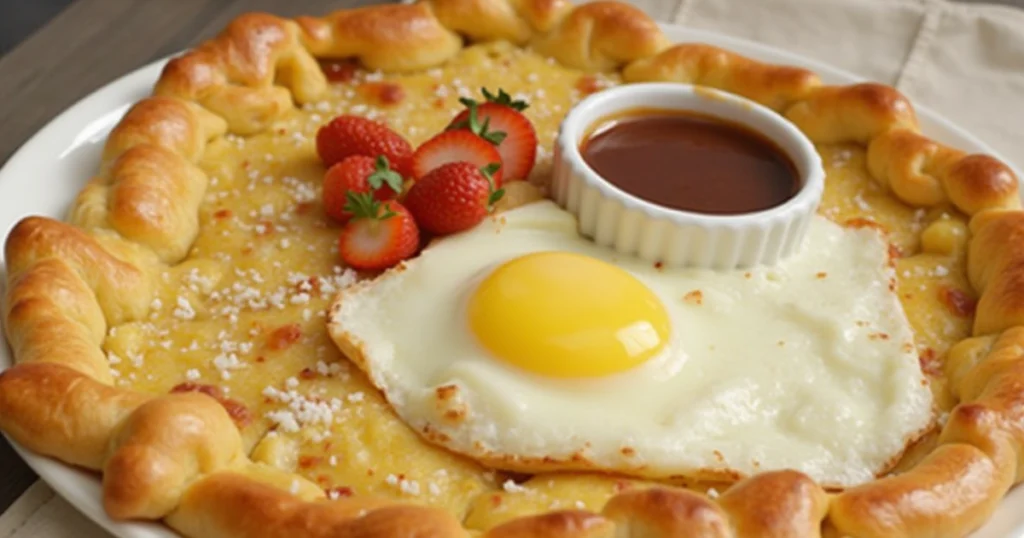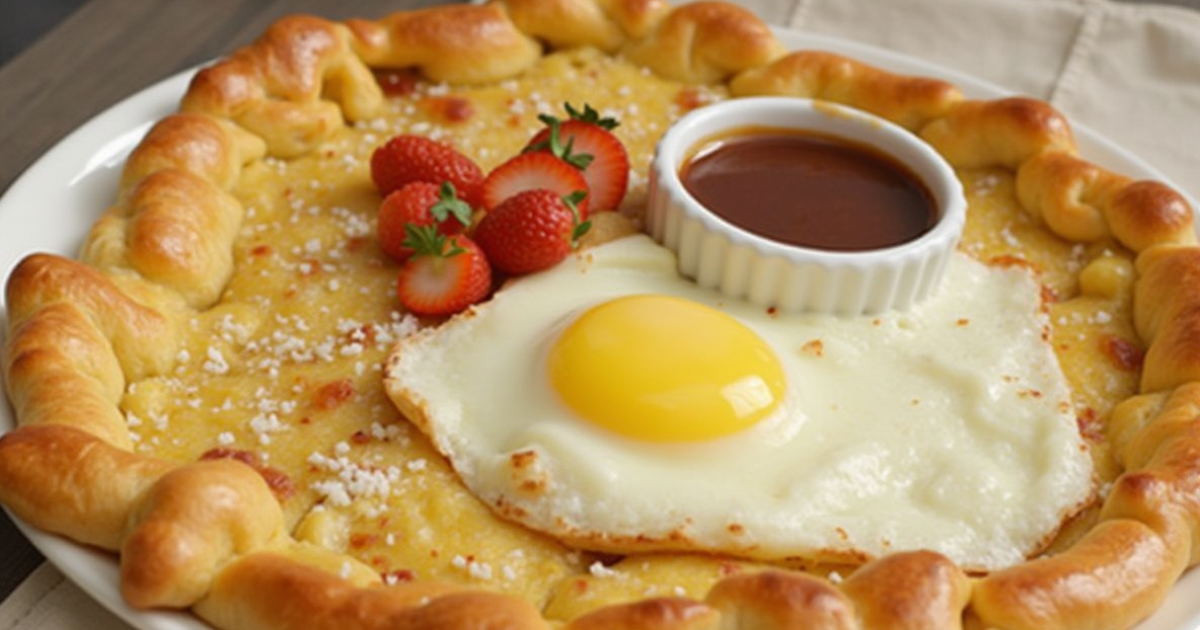
Table of Contents
Puff Pastry: The Flaky, Buttery Delight
Definition, Origin, and Taste
Puff pastry is a light, flaky, and buttery dough known for its delicate, airy texture. It’s created by layering dough and butter, then rolling and folding it repeatedly to form multiple thin layers. When baked, these layers puff up beautifully, creating a crisp, golden exterior. The origin of puff pastry dates back to 17th-century France, though similar techniques were used in ancient times. Its taste is rich, buttery, and slightly sweet or savory depending on the recipe, making it versatile for a wide range of dishes—everything from pastries to savory appetizers. The flaky texture and buttery flavor have made it a favorite in both traditional and modern cuisine.
Why This Article?
This article aims to help home cooks, whether beginners or experienced chefs, explore the art of making puff pastry from scratch. By learning about the ingredients, preparation steps, and tips for success, you can add a new skill to your culinary repertoire. Puff pastry is used in a variety of recipes—from sweet treats like croissants and Danishes to savory pies and tarts. Whether you’re looking to make your own pastry or explore how to use it, this guide will provide the knowledge to elevate your cooking.
1. List of Ingredients
Making puff pastry requires a few basic ingredients, but the technique is key to achieving the perfect layers.
Ingredients:
- Flour: 2 1/2 cups (all-purpose flour, for the dough).
- Butter: 1 1/4 cups (cold, unsalted butter for the dough and for laminating).
- Water: 1/2 cup (cold, for binding the dough).
- Salt: 1 tsp (for flavor).
- Lemon Juice or Vinegar: 1 tsp (optional, to help with dough texture).
Substitutes:
- Butter: If you need a dairy-free version, you can use plant-based butter or margarine, though it may affect the texture slightly.
- Flour: For a gluten-free puff pastry, you can use a gluten-free flour blend. However, keep in mind that puff pastry made without gluten may not achieve the same flaky texture.
2. Servings
This recipe typically yields 2-3 servings depending on the size and usage of the puff pastry. When used for making pastries or tarts, it can serve 4-6 people.
3. Preparation Time
- Active Time: 30-40 minutes (for mixing and folding the dough).
- Inactive Time: 2-3 hours (for chilling the dough to allow the butter to firm up).
- Total Time: 3-4 hours (including chilling time).
4. Cooking Time
- Cooking Time: 15-25 minutes (depending on the thickness of the dough and the size of the pastry).
- Cooking Temperature: 400°F (200°C) – bake at a high temperature to help the layers puff up.
- Cooking Method: Bake in the oven until golden brown and crisp.
5. Step-by-Step Instructions
- Prepare the Dough: In a bowl, mix the flour and salt. Add the cold butter (cut into small cubes) and rub it into the flour with your fingers or a pastry cutter until it resembles coarse crumbs. Add cold water (and lemon juice or vinegar if using), stirring until the dough begins to come together.
- Knead and Rest: Turn the dough out onto a lightly floured surface and knead it a few times. Wrap it in plastic wrap and refrigerate for about 30 minutes.
- Roll and Fold: Roll the dough into a large rectangle. Place a block of cold butter in the center, folding the dough over it like an envelope. Roll the dough out again into a long rectangle and fold it into thirds, like a letter. Repeat this rolling and folding process (known as lamination) 4-5 times, resting the dough in the fridge for 20-30 minutes between each fold.
- Final Rest: After completing the folds, wrap the dough in plastic and chill it for at least 1 hour to allow the butter to firm up.
- Roll Out and Use: Once chilled, roll out the dough to your desired thickness and use it for pies, tarts, or other pastries.
6. Difficulty Level
Medium to High: Puff pastry requires patience and precision in its technique. The process of laminating dough and butter to create thin, delicate layers can be tricky for beginners but rewarding once mastered.
7. Presentation and Plating Suggestions
- Sweet Pastries: For a sweet presentation, dust the baked puff pastry with powdered sugar or drizzle with chocolate ganache. Serve with a scoop of vanilla ice cream or fresh berries.
- Savory Tarts: For savory tarts, top with fresh herbs, a drizzle of balsamic reduction, or a sprinkling of sea salt for an elegant finish.
- Mini Puffs: For appetizers, cut the puff pastry into small squares or circles, fill with your choice of filling, and bake until golden brown. Serve with a dipping sauce or chutney.
8. Taste Profile
Puff pastry has a rich, buttery flavor, which is complemented by its light, flaky texture. When baked, the layers puff up, creating an airy crunch that contrasts beautifully with whatever filling you choose—be it sweet or savory. The delicate taste is perfect for both delicate desserts and hearty savory dishes.
9. Allergen Information or Dietary Restrictions
- Dairy: Puff pastry is traditionally made with butter, which contains dairy. For a dairy-free version, use a plant-based butter substitute.
- Gluten: Traditional puff pastry contains gluten from wheat flour. For gluten-free puff pastry, use a gluten-free flour blend.
- Eggs: Puff pastry typically doesn’t contain eggs, but egg wash (brushing with a beaten egg) is often used to achieve a golden finish when baking.
10. Nutritional Information
Here’s an approximate breakdown per serving (about 1/6 of a batch, unfilled):
- Calories: 150-200 kcal (depending on the butter used).
- Fat: 10-15g (mostly from butter).
- Carbohydrates: 20-25g.
- Protein: 2-3g.
- Fiber: 1-2g.
- Sugar: 0g (unless sweetened with a filling).
11. Storage and Leftover Tips
- Storing Dough: If you’ve made extra puff pastry dough, wrap it tightly in plastic wrap and store it in the fridge for up to 3 days. You can also freeze the dough for up to 3 months.
- Storing Baked Puff Pastry: Baked puff pastry is best enjoyed fresh, but if you have leftovers, store them in an airtight container at room temperature for 1-2 days. To restore some crispness, reheat in the oven for a few minutes.
- Freezing Baked Puff Pastry: Freeze baked puff pastry for up to 1 month. Let it cool completely, then wrap it tightly in foil or plastic wrap.
12. Troubleshooting
- Butter Leaking: If the butter starts leaking out during the rolling process, it might be too warm. Ensure the butter is cold and firm before you begin the folding process.
- Dough Too Tough: If your dough becomes tough, it may have been overworked. Be gentle while handling it and avoid over-kneading.
- Puffing Inconsistently: If your puff pastry doesn’t puff up evenly, try ensuring the dough is rolled evenly and consistently throughout the process. Also, make sure the oven is preheated properly to a high temperature for optimal puffing.
13. Cultural or Historical Context
Puff pastry, or pâte feuilletée, is often associated with French pastry-making, though variations of it existed in ancient Greece and Egypt. It became widely popular in Europe during the 17th century, with France playing a key role in perfecting the technique. The pastry was initially time-consuming and reserved for special occasions due to the intricate folding and rolling required to create its light texture. Today, puff pastry is used in a wide variety of dishes across the world, from French croissants to savory tarts in English cuisine.

